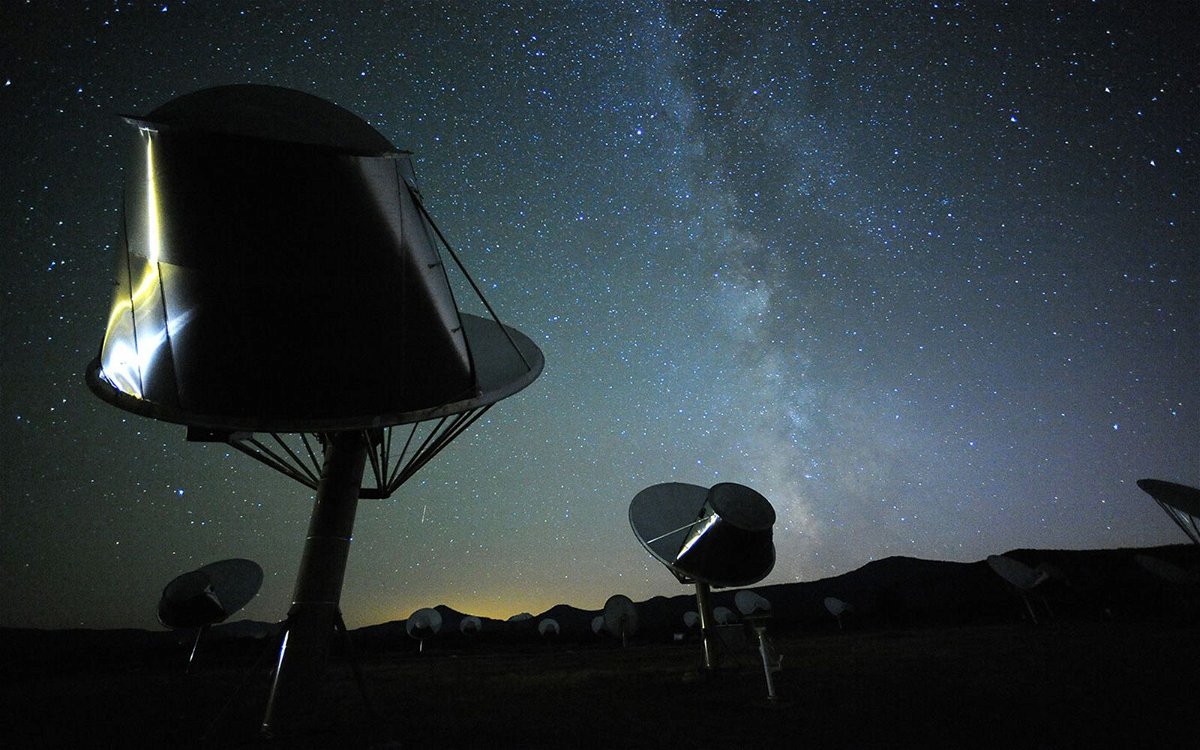Mysterious fast radio bursts in space keep getting stranger

By Ashley Strickland, CNN
(CNN) — Fast radio bursts, or bright, millisecond-long flashes of radio waves in space, are one of the most enduring mysteries of the cosmos — and they just became a little stranger.
The first fast radio burst, or FRB, was discovered in 2007, and since then, hundreds of these quick, intense events have been detected coming from distant points across the universe. In a thousandth of a second, the bursts can generate as much energy as the sun creates in one year or more, according to previous research.
But astronomers don’t understand what causes them.
Now, scientists have noticed a never-before-seen quirky pattern in a newly spotted repeating fast radio burst called FRB 20220912A. A study published Wednesday in the Monthly Notices of the Royal Astronomical Society details the discovery, which provides valuable clues to researchers aiming to identify the phenomenon’s source while introducing new enigmas to unravel.
Astronomers detected the burst using the California-based SETI Institute’s Allen Telescope Array, or ATA, which includes 42 antennae at the Hat Creek Radio Observatory in the Cascade Mountains.
The team detected 35 fast radio bursts from one source over a two-month period.
Many FRBs release radio waves lasting only a few milliseconds at most before disappearing, which makes fast radio bursts difficult to observe. But some radio bursts have been known to repeat and release follow-up bursts that have allowed astronomers to trace the signals back to distant galaxies.
At first, FRB 20220912A seemed similar to other known “repeaters,” and each detected burst shifted from higher to lower frequencies.
But a closer look at the signal revealed something new: a noticeable drop in the center frequency of the bursts, acting like a celestial slide whistle.
The dip became even more obvious when the researchers converted the signals into sounds by using notes on a xylophone. High notes correspond to the beginning of the bursts, with low notes acting as the concluding tones.
The team tried to determine whether there was a pattern within the timings between each burst, similar to some other known repeating fast radio bursts. But researchers weren’t able to detect one for FRB 20220912A, further suggesting that the celestial events can be unpredictable as well.
“This work is exciting because it provides both confirmation of known FRB properties and the discovery of some new ones,” said lead study author Dr. Sofia Sheikh, a National Science Foundation MPS-Ascend postdoctoral fellow at the SETI Institute, in a statement.
More questions than answers
Each observation of fast radio bursts brings insights as well as more questions, the researchers said.
Astronomers suspect that some fast radio bursts may originate from magnetars, the powerfully magnetized cores of dead stars. But other research has suggested that collisions between dense neutron stars or dead stars called white dwarfs may be the cause.
“We’re narrowing down the source of FRBs to extreme objects such as magnetars, but no existing model can explain all of the properties that have been observed so far,” Sheikh said.
The study was the first to observe fast radio bursts using the Allen Telescope Array, which has been undergoing refurbishment the past few years. Ongoing upgrades for the array will not only allow astronomers to track how fast radio bursts behave at different frequencies but also search for fainter signals.
“This work proves that new telescopes with unique capabilities, like the ATA, can provide a new angle on outstanding mysteries in FRB science,” Sheikh said.
The-CNN-Wire
™ & © 2023 Cable News Network, Inc., a Warner Bros. Discovery Company. All rights reserved.